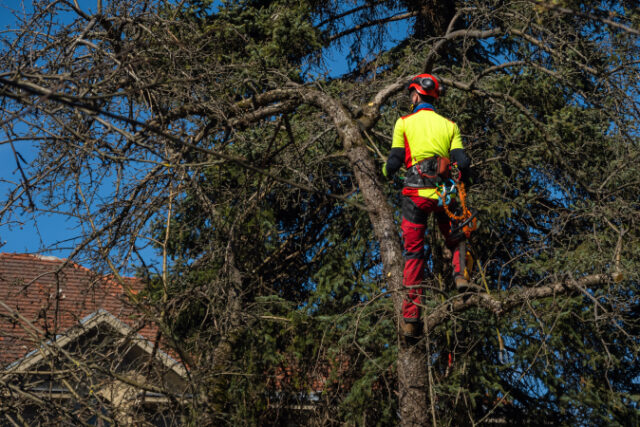
Trees play a huge role in our communities by providing shade, helping to filter pollution from the air, stopping erosion and serving as a natural habitat for many animals. It’s important that we take care of them so we can continue to benefit from them. Here are 6 simple ways to care for your trees so they can better care for you.
Remove deadwood and broken branches
During a storm or extreme weather event, it’s common that strong winds will snap some of your tree’s branches and cause them to fall off. It is important that you remove these immediately, so no one gets hurt. If the branch is too heavy or thick for you to do it, consider getting a professional involved so they can remove them safely using proper equipment.
Deadwood can also be very dangerous for the health of a tree as it allows water rot and bugs direct access to the heart of the tree. Trees use their bark a lot like our body’s skin. The sap is a natural defense against burrowing bugs as they drown or get stuck when they encounter it. Deadwood allows bugs a highway right into the hardwood of the tree, bypassing the bark and sap. Best to remove every year.
Mulch around the base of the tree
Mulch is a great way to make sure your tree maintains good moisture in summer and avoids the roots freezing during winter. Mulch should be laid between 2 and 4 inches thick directly under the canopy of the tree. Ben McInerney a qualified arborist suggests you avoid packing mulch directly on the trunk of the tree. This can cause moisture to build up around the base which can easily rot. Leave a 3-inch gap directly around the base of the trunk to avoid this.
Aerate soil around drip-zone of tree
It’s a little-known fact that trees roots need oxygen as well as water. If you have har-packed soil, it can hinder the development and growth of the tree, so maintaining soft soil around the base and drip zone of a tree is important.
Remove branches that cross paths with another tree
If you have two trees that are growing too close together, branches can touch and rub against each other in the wind cause bark to be stripped off. This is detrimental to the health of the tree and should be avoided. Make sure to remove branches that are within 3 feet of each other on a large tree with long branches.
Avoid trimming more than 30% in a single year
If you want to remove a large amount of material from your trees, spread it out over multiple years so that you don’t load the tree up with too much to recover from in one go. If you prune too much suddenly, this will slow the growth rate down and cause problems such as excess suckers shooting out from the trunk and wounds.
Furthermore, pruning of more than 10% should be carried out in winter. This is when a tree is dormant and able to cope better with a larger amount of foliage being removed. As winter moves into spring the tree slowly “wakes up: and is better able to process the change to its structure rather than at the height of summer.
Regular maintenance plan
It’s vital that you maintain your trees regularly. This means that you should trim them at least once a year to make sure any dead branches are removed and the tree doesn’t become dangerous for anyone or anything underneath it. If there is a lot of deadwood, it might be time to remove some of the lower branches as well so more light can reach its leaves. If you don’t, your trees might not die completely but they won’t be able to benefit from the sun.
Trees are an essential part of our community and studies have found that cities with more trees have a happier and healthier population. That being said eventually trees reach the end of their Safe and Useful Life Expectancy (SULE) and become a danger to the community.
It is important that we recognize the larger life cycle of trees that can span hundreds of years, and we endeavor to make the right decision when considering the removal of trees and replace them with a sapling so future generations in your community can benefit.












